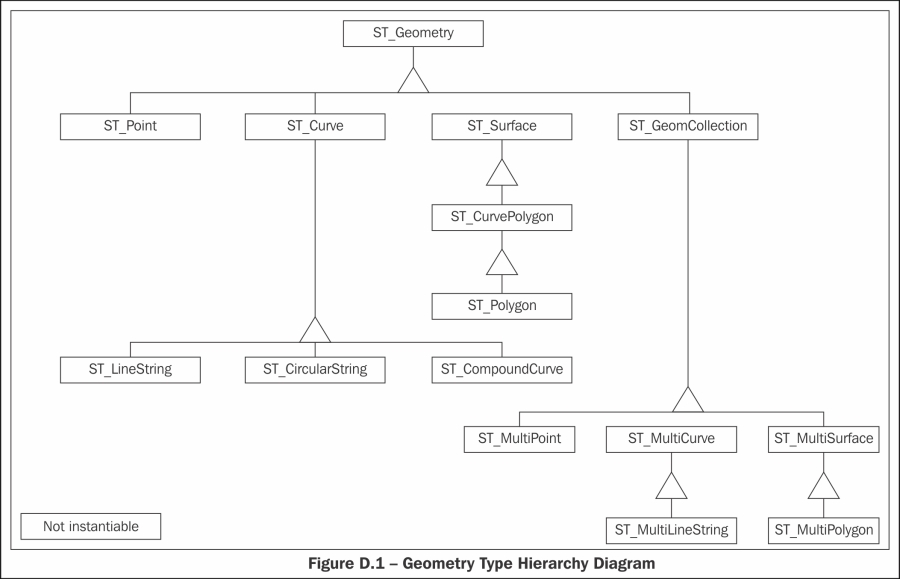Cross-platform representation
There are two aspects to representing spatial data in a standards compliant, cross-platform manner:
Geometry type definition (what can be represented and stored)
Internal geometric description (how each object is physically described)
These will be covered in the following sections:
Outlining the SQL/MM ST_GEOMETRY type
The SQL/MM standard provides access for the database designer and developer to a geometry type hierarchy that can be used for both storage and application development. This is shown by the following diagram.
Oracle's MDSYS.ST_GEOMETRY is a database implementation of this SQL/MM geometry hierarchy, whose actual implementation is depicted graphically as in the following diagram (created using SQL Developer's Data Modeling extension).
Note
The MDSYS schema prefix is actually not needed for the Oracle SQL/MM types due to the presence of global synonyms and as long as no other object has the same name in the current connected schema.

As can be seen Oracle...































































